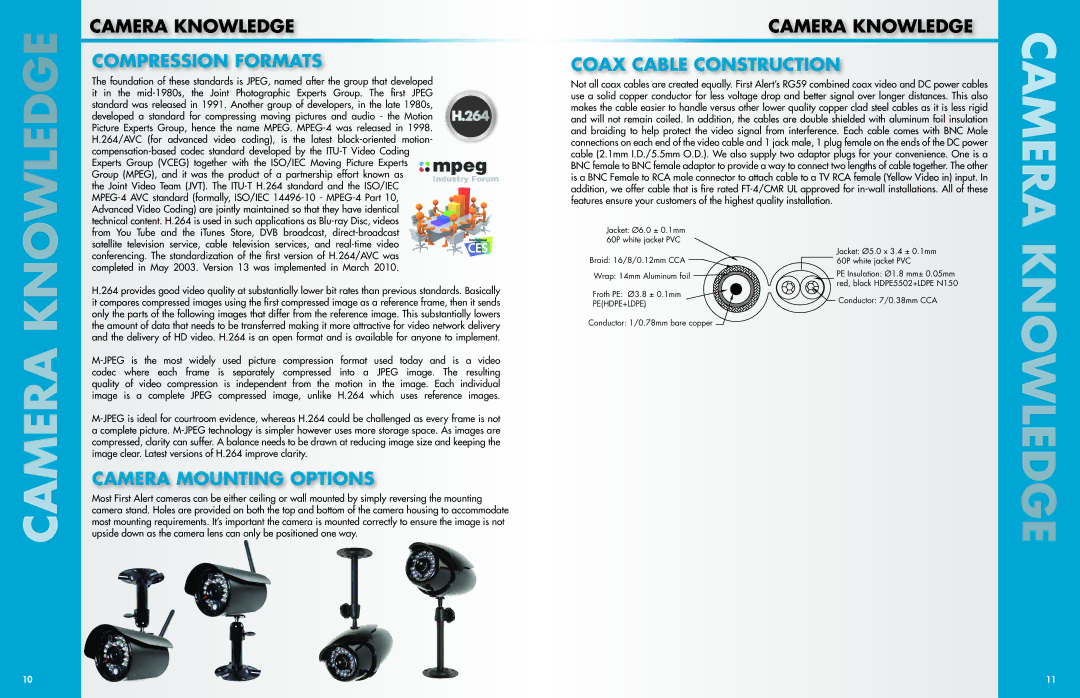Security Camera specifications
First Alert Security Camera systems provide a vital line of defense for homeowners and businesses looking to enhance their security measures. Renowned for their reliability and user-friendly features, First Alert cameras offer a range of advanced technologies that ensure comprehensive surveillance coverage.One of the primary features of First Alert cameras is their high-definition video quality. Many models come equipped with 1080p or even 4MP resolution capabilities, allowing for crystal-clear imaging both day and night. This feature is particularly beneficial for identifying faces and license plates, providing enhanced situational awareness.
Night vision capabilities are another standout feature of First Alert cameras. Utilizing infrared technology, they can capture detailed video in low-light conditions, ensuring that surveillance is effective around the clock. This is essential for monitoring outdoor areas after dark, where intrusions are more likely to occur.
First Alert security cameras also offer motion detection technology, which sends real-time alerts to your smartphone or tablet when movement is detected. This ensures that homeowners can stay informed about any unusual activity in their vicinity. Along with motion alerts, many models integrate video recording capabilities, allowing users to review footage from previous incidents.
In terms of connectivity, First Alert cameras typically use Wi-Fi, allowing for remote monitoring through intuitive mobile apps. This feature enables users to check live feeds, receive alerts, and manage camera settings from anywhere. Compatibility with smart home systems enhances their functionality, allowing integration with other security devices and platforms.
The weather-resistant design of First Alert security cameras ensures durability in various outdoor conditions, making them suitable for monitoring entrances, backyards, and other vulnerable areas. Additionally, many models support two-way audio, allowing users to communicate through the camera, enhancing interaction with visitors or potential intruders.
Moreover, First Alert provides easy installation options, enabling users to set up their security cameras without professional assistance. Overall, First Alert security cameras combine advanced technologies, robust features, and user-centric designs to create an effective security solution for safeguarding homes and businesses alike. With reliable performance and comprehensive coverage, First Alert remains a trusted name in the realm of security surveillance.

